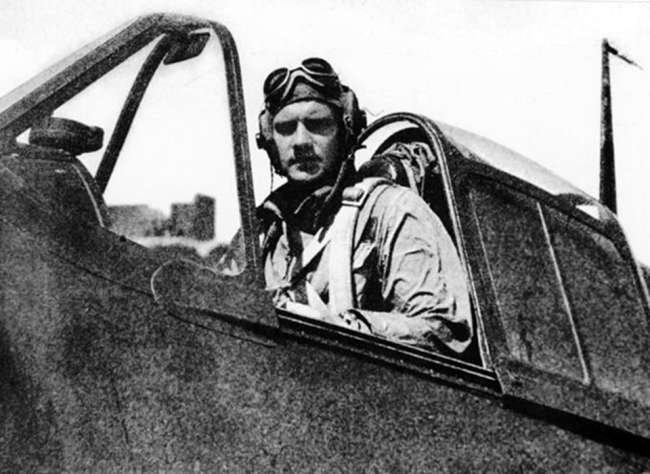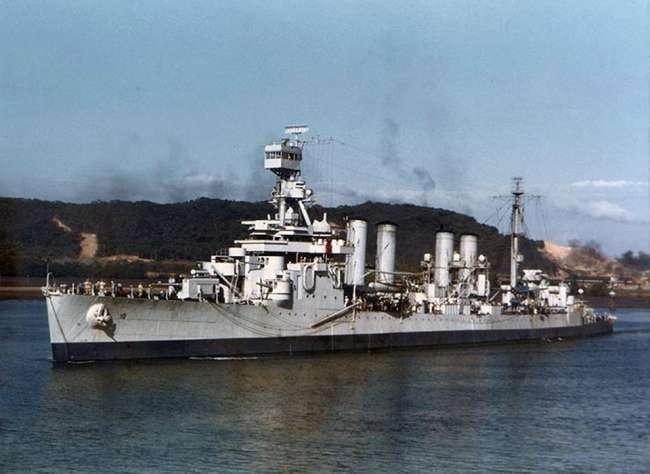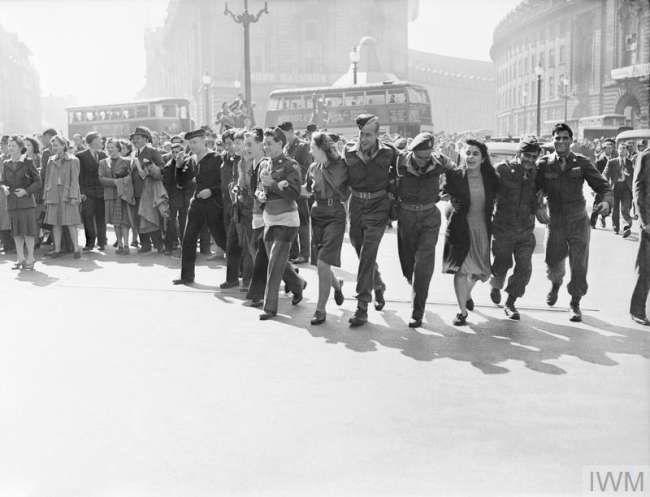For over 275,000 American servicemen on Victory in Europe (V-E) Day, May 8, 1945, their celebration of the end of the War came with forced silence. No great parade or impulsive kisses awaited these men and women. They had already discharged their duty, giving the ultimate sacrifice in service of their country. Today, 14 American cemeteries, monuments, and scattered burials continue to honor those lost in the European theater of operations during World War II. Marked by flawless white marble crosses and stars of David, over 76,000 American War dead rest in hallowed ground on or near the battlefields where they fell. Many thousands more were repatriated to the United States for burial in the years after the end of hostilities. Operated today by the American Battle Monuments Commission (ABMC), these solemn grounds were in an entirely different state 75 years ago.
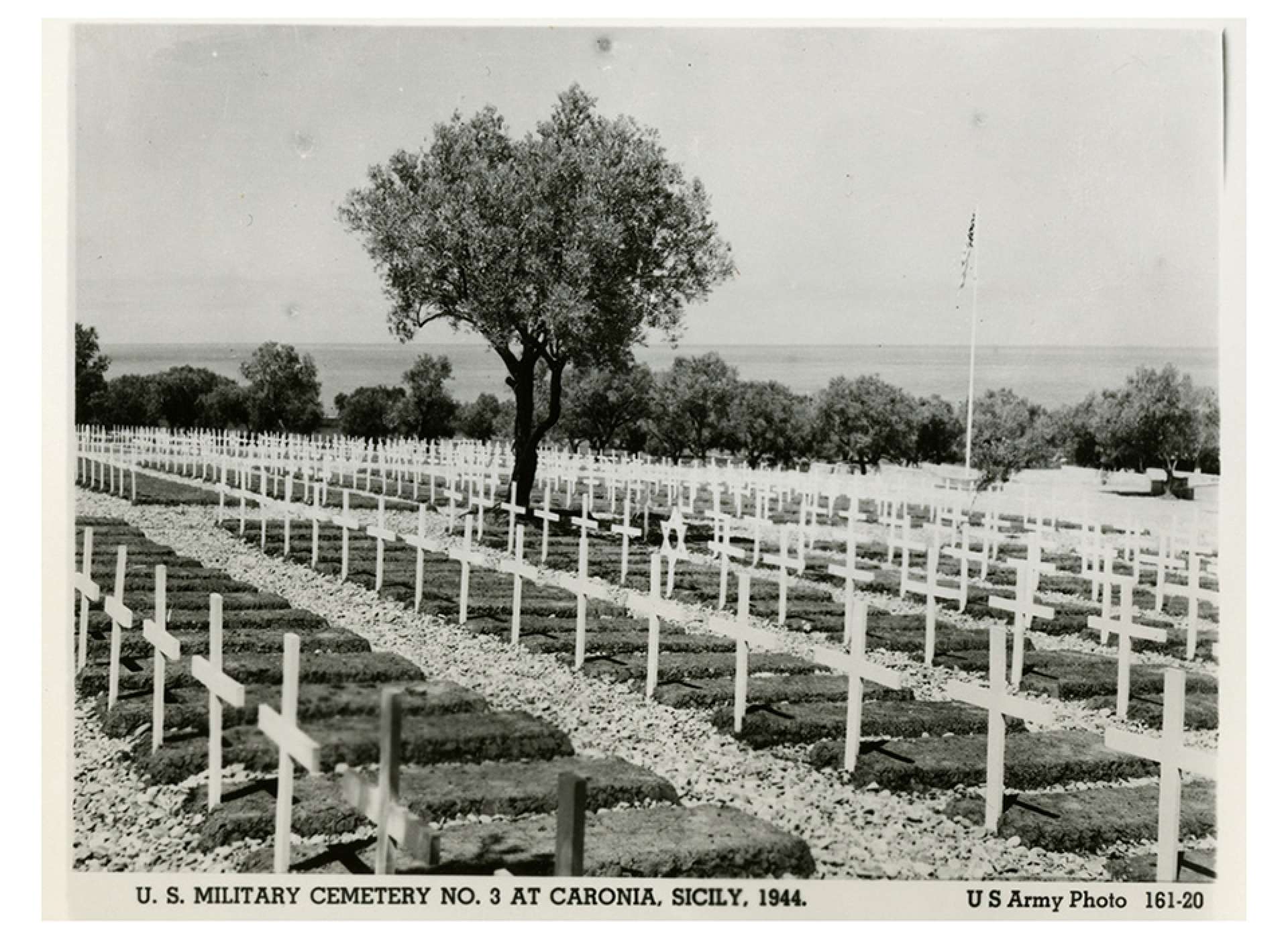
US Army Cemetery No. 3 at Caronia, Sicily. This image shows a temporary cemetery set up in Italy. Note the temporary grave sites with wooden crosses. Each temporary cemetery used local materials to landscape, making each one unique. The National WWII Museum, 2013.495.1098
Dealing with soldiers killed on the field of battle is as old as battle itself. For most of human history the dead were left where they fell, buried in mass graves or consumed in funeral pyres. Proper identification and burial were reserved for nobles and leaders. In an ironic twist, as modern warfare advanced the death tolls of war to unheard levels, there began to be an emphasis on identifying and properly burying the dead. Although the concept of a “decent burial” is certainty not a modern construct, the realities of war and the limitations of science and travel made quick burial on or near the battlefield a necessity.
For the United States it was not until the Civil War (1861-1865) that a dedicated effort was made to properly bury those who were killed in service of their country. One of the most famous speeches in American history, delivered by President Abraham Lincoln, was at the dedication of the Soldiers’ National Cemetery in Gettysburg, Pennsylvania. Despite sounding like a real beginning, the efforts during the Civil War only dictated that soldiers should be laid to rest in dedicated cemeteries. It offered no infrastructure or process for collecting those dead, leaving many to lie in the field where they fell for weeks, months, or years.
The need for burying large numbers of men killed in the service of their country was largely a reactionary need—only in times of war. During peacetime there was very little drive or money to advance this department. The biggest development in assisting in identification was made in 1913 when the US Army made mandatory for all service members the wearing of metal identification disks, later known as dog tags. In previous conflicts, soldiers were known to write their names and information on pieces of paper or wood and attach them to their uniforms. Though this method was better than nothing, it was far from ideal when an identification needed to be made. Metal disks greatly increased the chances of identifying a body.
World War I provided the first incentive for a more organized system for identifying and interring men killed in action. The recently re-organized Graves Registration Service placed an emphasis on quickly identifying bodies and burying them in temporary graves. This system relied on help from the combat units in identifying the men and burying them. This in no way meant that each person was identified, many thousands in both world wars are still unknown. Once the conflict was over, plans were made for reinterring the dead to permanent cemeteries in Europe or returning them to the United States. By the end of World War I, the Graves Registration Service consisted of over 7,000 men organized into 19 companies. For years after the end of the War, Graves Registration units established permanent cemeteries moving over 70,000 sets of remains. In 1934, the American Battle Monuments Commission took over management of the cemeteries.
During World War II, Graves Registration units were deployed with frontline organizations to perform their grim work. Dealing with the dead was a necessary but uncomfortable task. Bodies were usually mangled by the weapons of modern war or lay within direct fire of the enemy. Combat troops were often reluctant or distrustful of strangers who appeared to take their friends away. Despite the taboo nature of dealing directly with death, these units were part of larger plans and the normal logistical operations of the US Army.
When a soldier was killed on the battlefield, his body was recovered and brought to a collection point. Dog tags were never to be removed from the body. Seen often as a classic/dramatic movie moment, the set of dog tags had a purpose. One tag was to remain with the body at all times, and the second tag was securely fixed to the temporary wooden grave marker. Each body was inspected, and if possible, finger prints, dental information, and probable cause of death were recorded. All gear and personal effects were removed from the body. Government property was sent to recycling centers if it could be reused. Personal effects were sealed in specialized bags and securely shipped back to a processing facility in Kansas City, Missouri, for further shipment to the next of kin. After processing, bodies were brought to temporary cemeteries laid out by the Graves Registration units where appropriate religious ceremonies were performed by military chaplains. Temporary cemeteries were established wherever they were needed, often tracing the paths of field hospitals and major battles. Most often temporary graves were dug by POWs or by civilians hired by the Graves Registration units to help in the burial process. Each body was handled with respect and each cemetery was laid out as properly as possible. Proper spacing, appropriate wooden crosses or Stars of David, proper drainage, and even landscaping was established. As the battlefields moved across Europe, so did the Graves Registration units.
By the end of the War hundreds of temporary cemeteries were scattered all over Europe, a testament to the cost of the campaign.
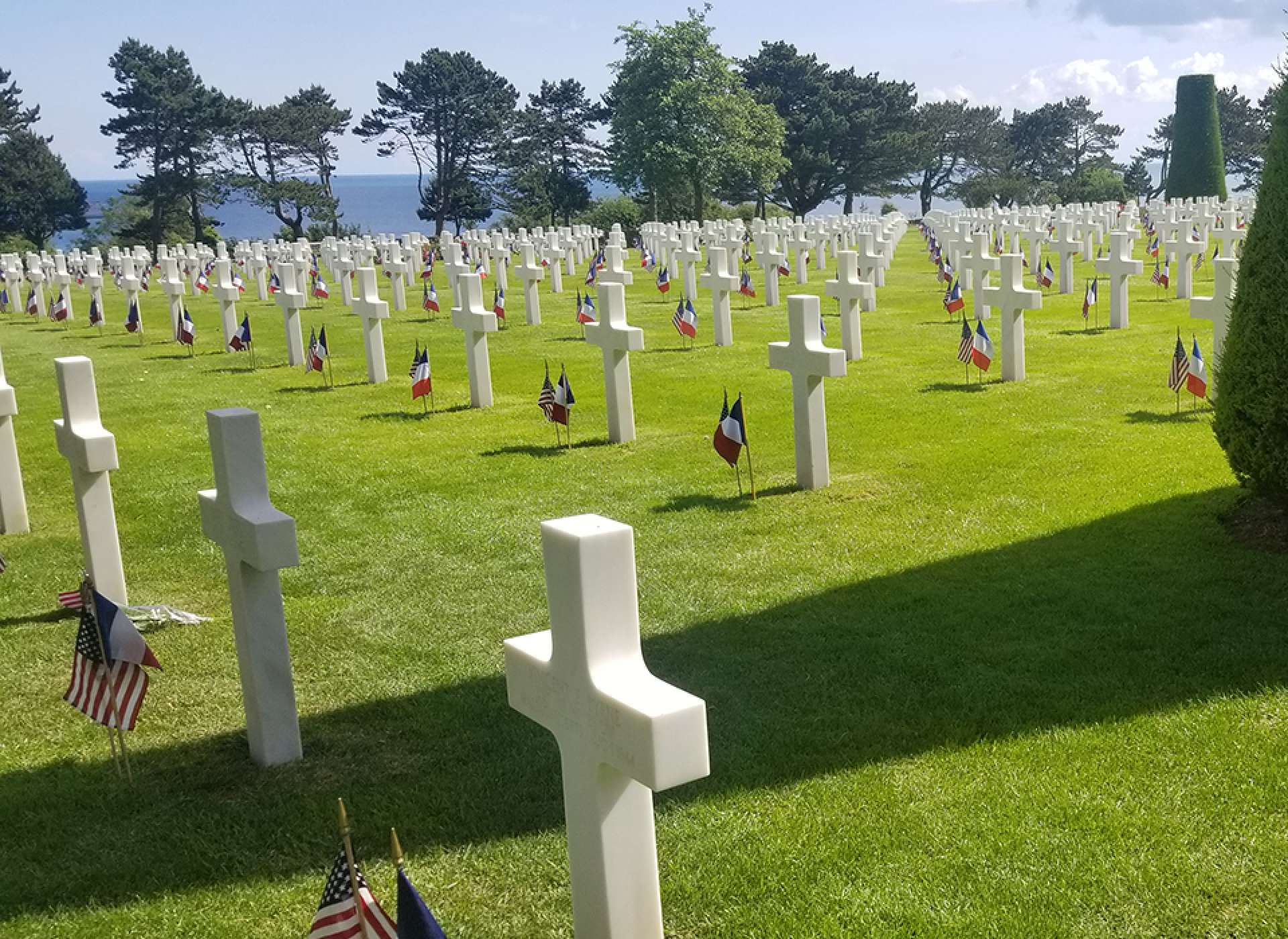
The Normandy American Cemetery is located on the bluffs above Omaha Beach at Colleville-sur-Mer, France. Containing the graves of 9,385 soldiers, the site was originally the temporary American St. Laurent Cemetery the first American cemetery established during World War II on Continental Europe. Photo courtesy of Josh Schick.
Even before V-E day, lawmakers began to discuss the final disposition of those killed during the War. Following the pattern of World War I, it was decided to give the next of kin two options. First, their loved one could be buried in an overseas American Cemetery. Second, they could be returned to the United States and buried in a private plot or national cemetery, all at the government’s expense. Legislators gave the Army until 1951 to find, identify, repatriate, or bury the remains of all service members killed during World War II. While the families decided, the work of locating all of the dead continued, and continues to this day. Tens of thousands of servicemembers were listed as missing in action, bodies buried or dismembered preventing location or identification.
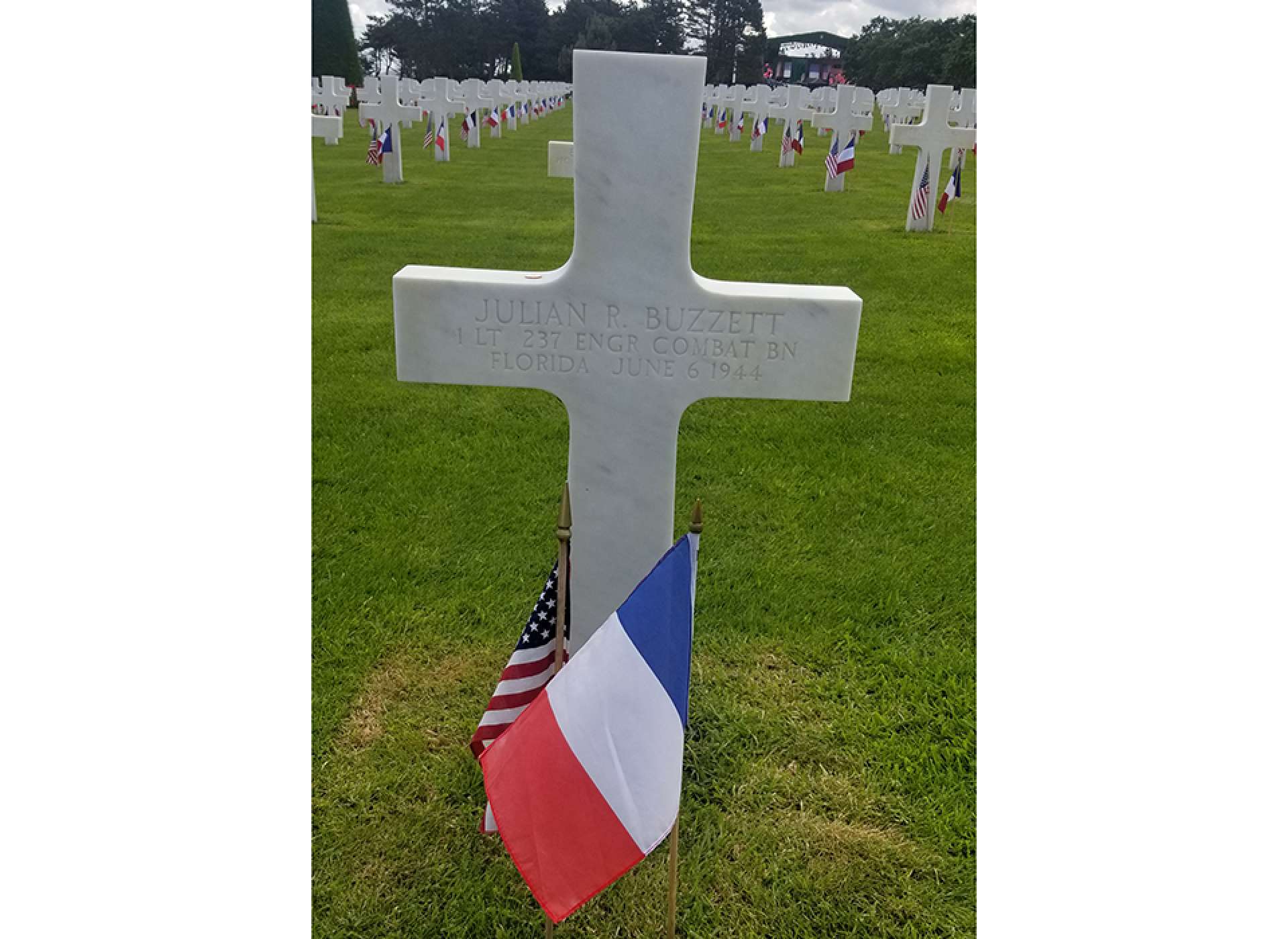
The grave marker of Julian Rexall Buzzett. Buzzett landed with the 237th Engineer Combat Battalion on Utah Beach the morning of June 6, 1944. After clearing gaps and blowing the seawall, Buzzett was killed during an assault on a bunker just behind the beach. Photo courtesy of Josh Schick.
Of the over 275,000 located dead at the end of the war, more than 170,000 were returned to the United States. For those 76,000 that remained in Europe, the Graves Registration service, and later the ABMC, established 13 permanent cemeteries for them to rest peacefully. In addition to graves, these sites contain monuments, chapels, and walls of the missing. Each cemetery is open to visitors, with special treatment afforded to the family of the servicemen that are buried there. These sites stand as monuments to their sacrifice and commemorations of the cost of V-E day in Europe.
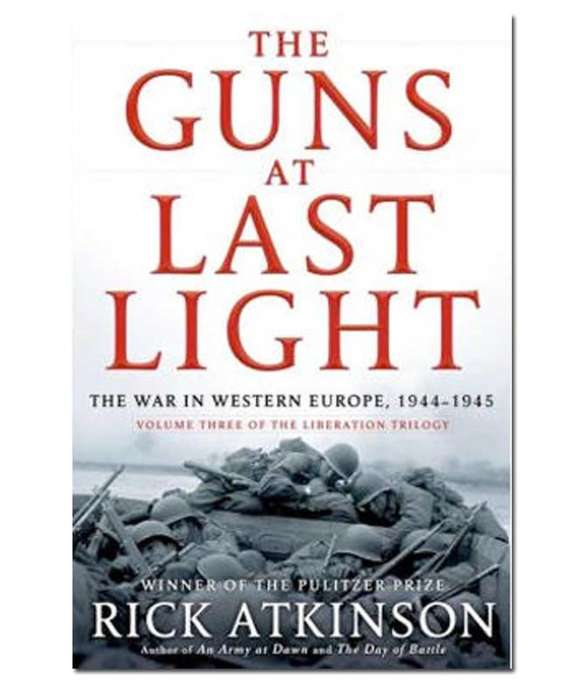
The Guns at Last Light: The War in Western Europe, 1944-1945
The magnificent conclusion to Rick Atkinson's acclaimed Liberation Trilogy about the Allied triumph in Europe during World War II.
This article is part of an ongoing series commemorating the 75th anniversary of the end of World War II made possible by Bank of America.
Joshua Schick
Cite this article:
MLA Citation:
APA Citation:
Chicago Style Citation:
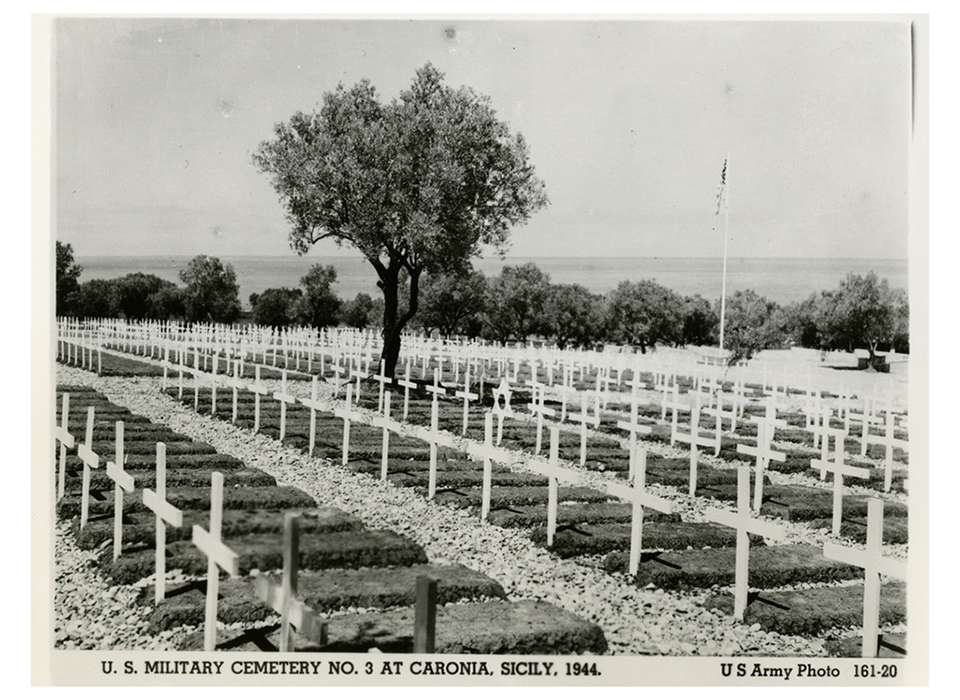


![Max Fuchs, New York City cantor, sings as Rabbi Sydney [sic] Lefkowitz, Richmond, VA, conducts the first Jewish services from Germany.](/sites/default/files/styles/max_650x650/public/2025-10/image1.jpg)




